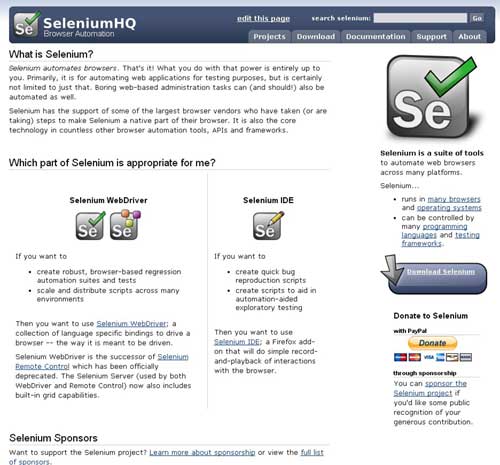Tutorials and resources on how to apply test automation in software testing
One of the current theory about testing is that programmers take care of the unit tests and QA people manage the higher levels of the testing pyramid. In his blog post, Kenny Cruden discusses the fact that this theoretical approach can work in practice.
Selenium tests can quickly grow in size and could become difficult to maintain, unless adhered to DRY principles to the extreme. Geb is an open source browser automation solution that brings together the power of WebDriver, the elegance of jQuery content selection, the robustness of Page Object modelling and the expressiveness of the Groovy language.
The user interface (UI) is an important part of the functionality of Android mobile apps, so you should be able to perform extensive UI tests. Google’s Mona El Mahdy has published has published on the Google Software Testing blog a post that presents four strategies to test Android UI, aiming to create UI tests that are both fast, reliable and easy to debug.
One of the famous concept in software testing is the testing pyramid defined by Martin Fowler that is based on strong unit tests and has less user interface (UI) tests at the top. Sometimes organizations have a different view of software tests and the pyramid is not a pyramid anymore. In this blog post, Fabio Pereira discusses the case where the pyramid looks like a cupcake.
Selenium is a widely used open source tool used for software testing that provides a record/playback IDE for authoring software tests without learning a specific test scripting language. In this article, Brian Van Stone provides some best practices on how to successfully use Selenium for your test automation efforts.
It’s commonly said that Test Automation means you need less testers on the team, it speeds up the testing process and allows more time for Exploratory Testing. In this talk Richard shares his critique of these common outcomes by calling upon his experiences of working in and managing teams where Automation has played a crucial part in the testing approach and has been used to great effect; but hasn’t resulted in the above outcomes.
Behavior Driven Development (BDD) is an software development technique that use a specific format that allows both to describe the system requirements, the features, and to feed an functional software testing tool that will allow to verify the software product. In this blog post, Shashikant Jagtap explains how to write better feature files.




